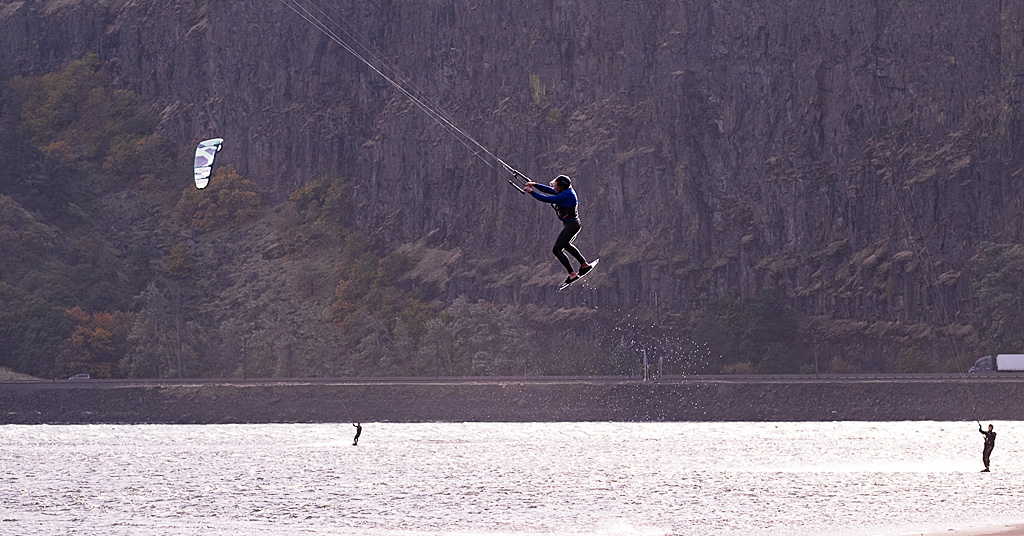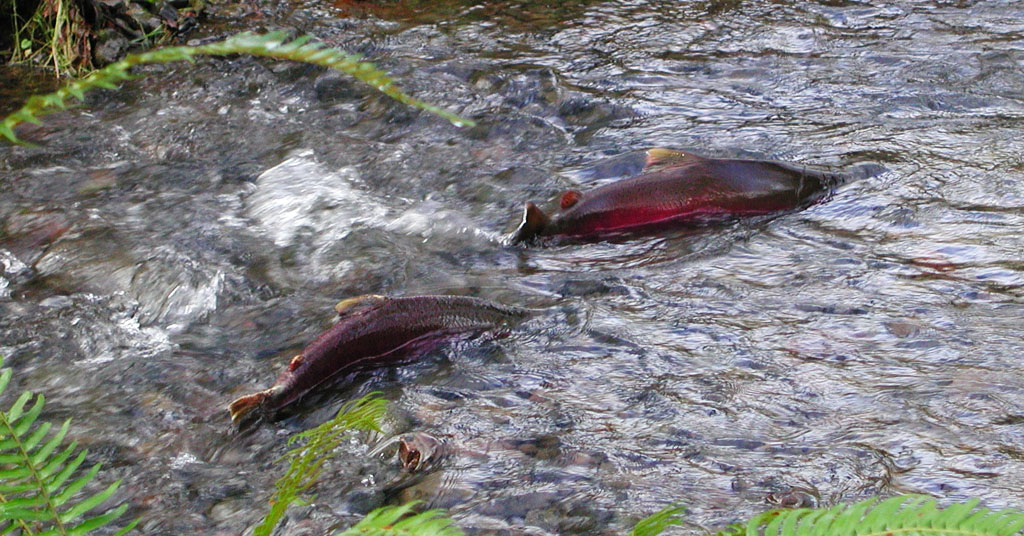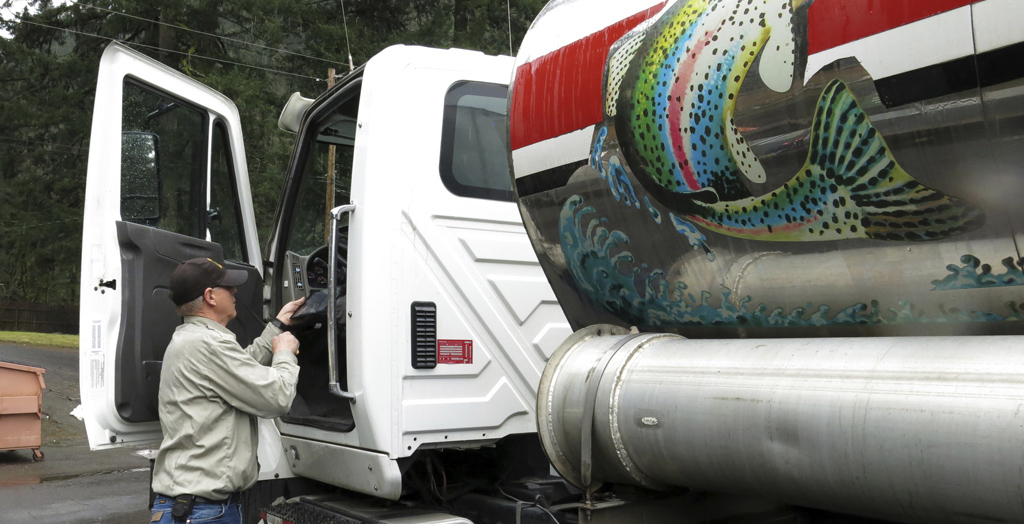Record-setting biomass density in the North Pacific should make life easier for Columbia River incoming salmon and steelhead
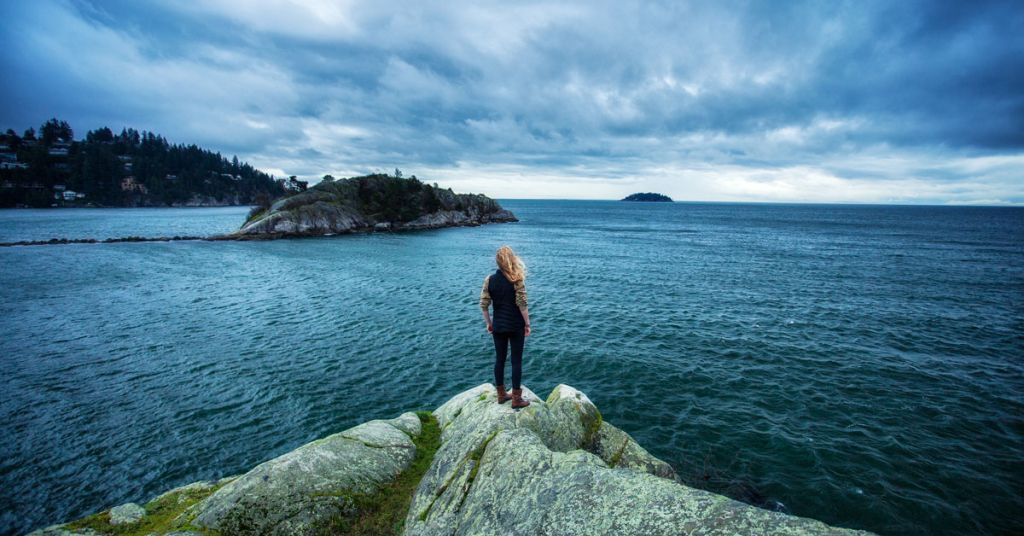
Looking good out there: Pacific conditions appear favorable from BC’s Whytecliff Park, and in a new NOAA report. Photo: Michael Matti/CC
By Jordan Rane. February 3, 2022. Nothing beats a good, long feast of premium saltwater plankton before heading back to the river for retirement—at least if you’re a growing anadromous fish.
According to a recent scientific finding, that’s likely what juvenile salmon and steelhead will be served in the North Pacific over the next couple of years before returning to their Columbia Basin rivers of origin to spawn.
In a rare but timely bit of promising news in the wake of reports of overheated rivers, decimated local fish populations and “quasi-extinctions,” the National Oceanic and Atmospheric Administration has just handed 2021 the second-best overall ocean condition score from a dataset stretching back 24 years—and the very best in one vital category.
SUBSCRIBE to Columbia Insight. Weekly updates, always free.
According to NOAA’s Ocean Indicators Summary for 2021 produced from studies off the Oregon Coast, 2021 produced a record amount of favorable oceanic biomass, stimulated by cold, salty and low-oxygen water, high chlorophyll concentrations and an early spring transition prompted by strong upwelling.
“This winter ‘pre-conditioning’ was likely the driver of the highest annual biomass of northern copepods observed in the 24-year time series,” reads the report.
Translation: Juvenile salmon and steelhead, which depend on cold-water copepods (planktonic organisms high in lipids and nutrients), will be nourished by the best ocean conditions in at least a quarter century before heading home to complete or continue their life cycles.
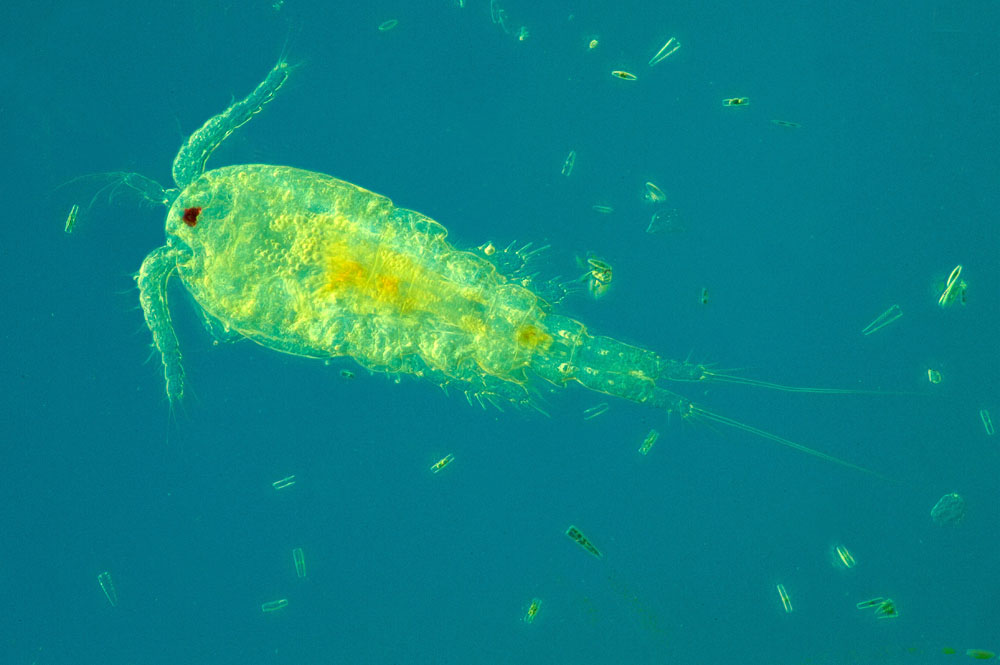
Big meal deal: Copepod under microscope with about 100x magnification. Photo: pitschuni/CC
“There is certainly some optimism all along the West Coast and in the Columbia Basin given the conditions we’re seeing out in the ocean,” Lance Hebdon, fisheries bureau chief for the Idaho Department of Fish and Game at Lewiston, told the Idaho Statesman.
Proof still to come
Officials hope the improved conditions will be reflected as soon as late 2022 with the return of jack spring chinook, coho and A-run steelhead, which typically spend just a single year in the ocean.
The real boon could be the following year when adult spring and fall chinook salmon and B-run steelhead return to the rivers after two-plus years out there.
MORE: Salmon are no longer kings of the Columbia. That has biologists worried
“We hit the bottom a year or two ago and we may have a little breathing room in the future,” said Hebdon. “The proof will be in adult returns.”
Promising ocean biomass conditions generally boost salmon and steelhead growth and survival during their saltwater phase, and bode well for freshwater returns.
Cheers from Astoria to Anchorage
Not every researcher has been thumbing their rosary beads while assessing ocean conditions in recent years. The new NOAA report may at least partly vindicate experts such as Ed Jones, the chinook salmon research initiative coordinator for the Alaska Department of Fish & Game in Juneau.
In 2018, Jones acknowledged dire ocean conditions, but told Outdoor Life magazine he believed history would win out over the long haul.
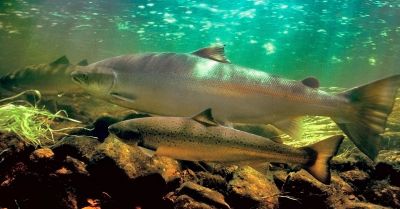
Looking good: Adult coho salmon. Photo: NOAA Library
“Fish populations are cyclical,” he said at the time. “The chinook will cycle back. I’ll take bets on it.”
MORE: Breach broached: Snake River salmon get attention from heavy hitters
At a 2019 King Salmon Symposium in Alaska, Jones remained steadfast even as other presenters used slides depicting the Grim Reaper walking along a beach and looking out over the ocean to illustrate their talks.
“I will say we don’t see any light at the end of the tunnel right now in Southeast Alaska … but I do believe, I firmly believe, we’re going to cycle up out of this at some point,” Jones told the Juneau Empire.
Why does that sort of perspective from more than a thousand miles away matter in the Columbia River Basin?
Because salmon that originate in the Columbia River make up between 50 to 60% of Alaska’s chinook yield in any given year. Taking in coastal, wild and hatchery stocks, Oregon and Washington chinooks can account for two-thirds of the annual Southeast Alaska catch.
‘Fingers crossed’
One favorable report doesn’t negate a broader array of unhappy indicators for anadromous marine survival rates.
But among some researchers it is cause for cautious optimism.
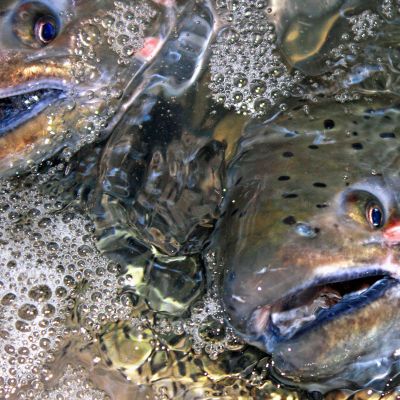
Coming in hot: Adult salmon at Lower Granite Dam on the Snake River. Photo: NOAA
So how long will this new reprieve last?
The answer is as elusive as ever.
Historically, over the long term, ocean conditions are shown to be cyclical. A dire marine heat wave period (dubbed “The Blob”), which began in 2014 and lasted about six years, severely impacted salmon and steelhead runs along the Pacific coast.
Prior to that, a favorable span culminating in 2008 was marked by the same advantageous conditions that are happening now.
Lately, however, ocean condition “trends” have become far less predictable and more volatile, possibly owing to climate change, say scientists, who remain optimistic about ocean conditions over the next few years at least.
“Fingers crossed,” Jennifer Fisher, a scientist at NOAA’s Northwest Science Center, told the Idaho Statesman. “Maybe we are going into a longer [good ocean] cycle—or maybe we have broken a warm cycle and may now get a few years of decent ocean conditions.”




